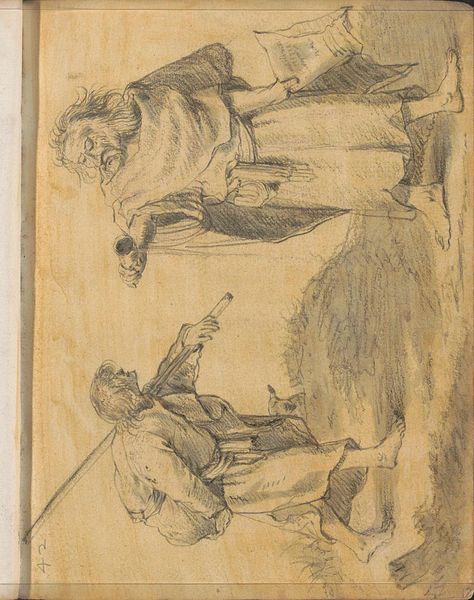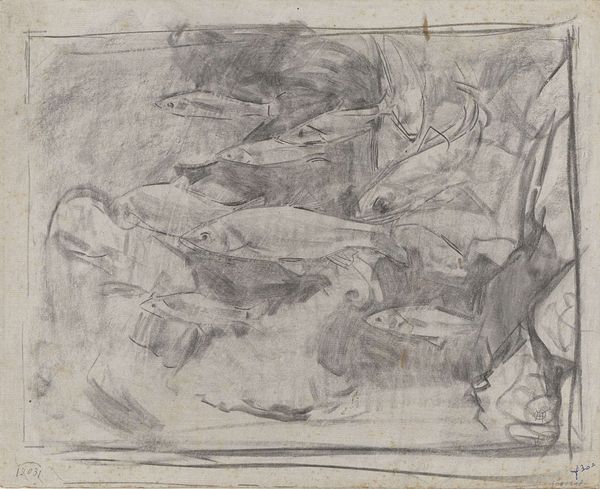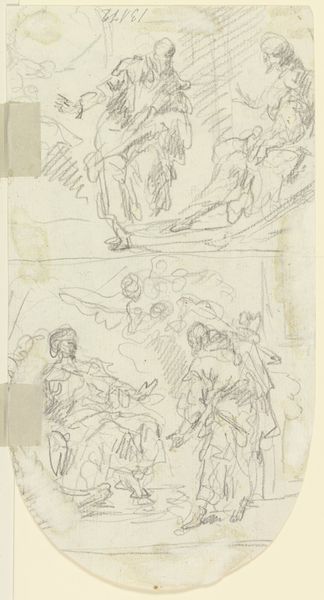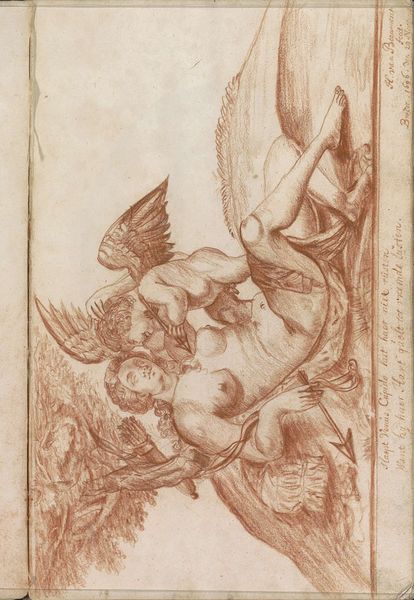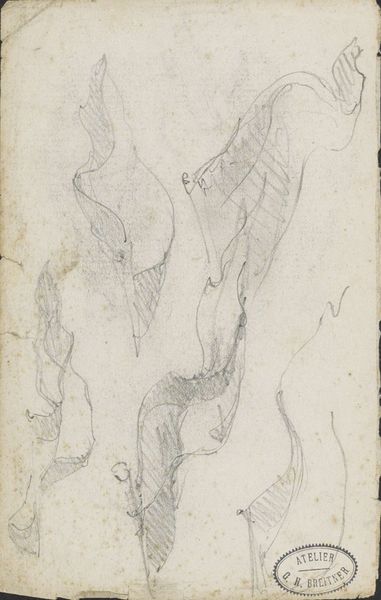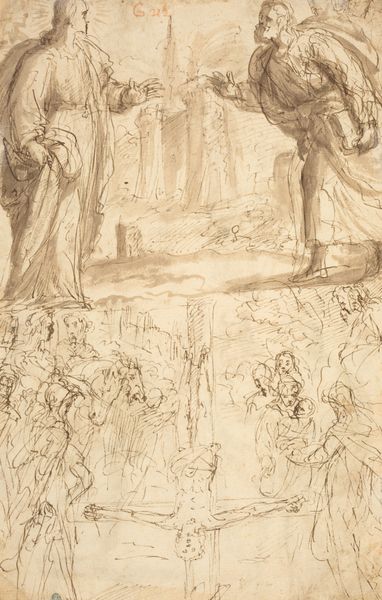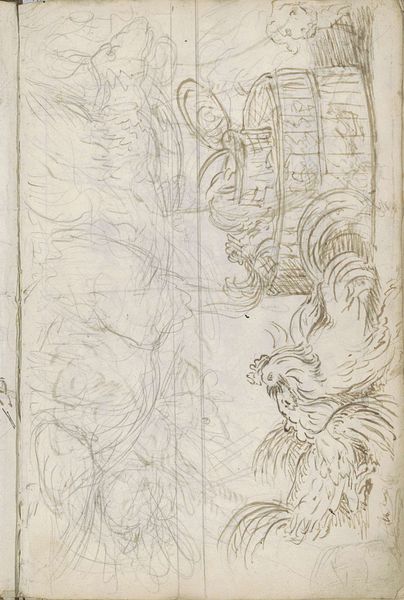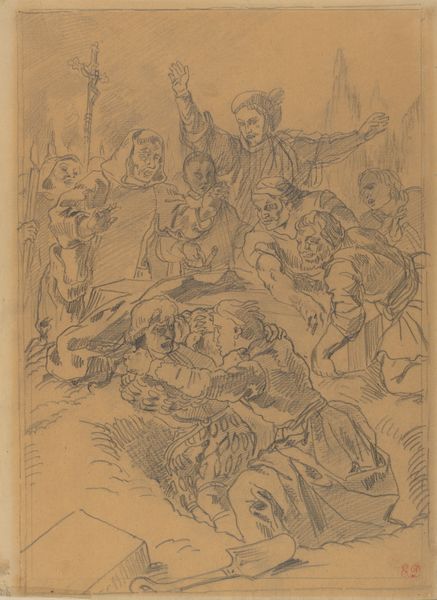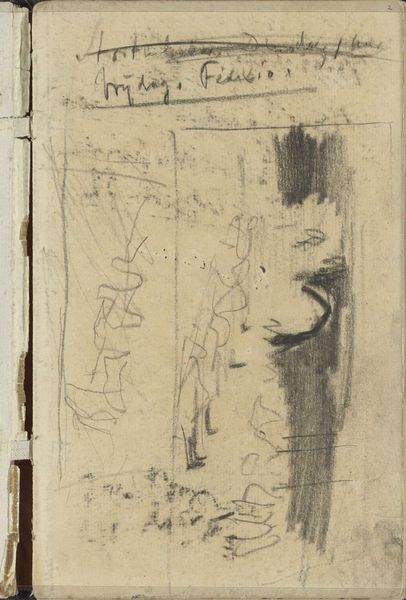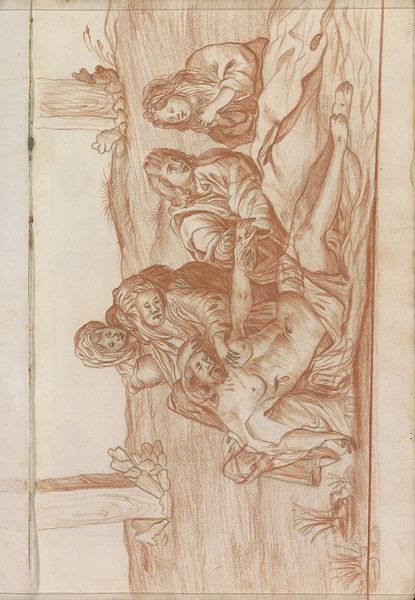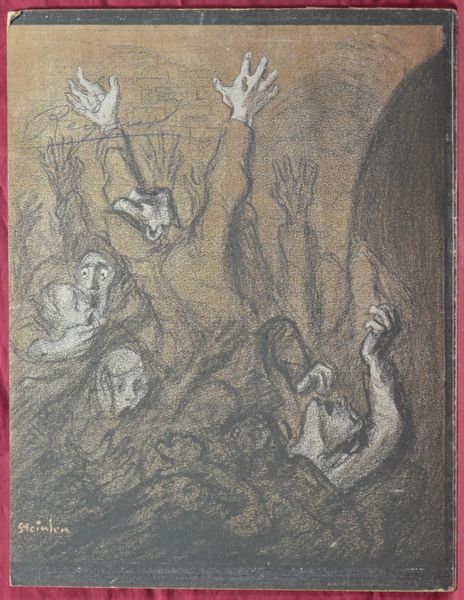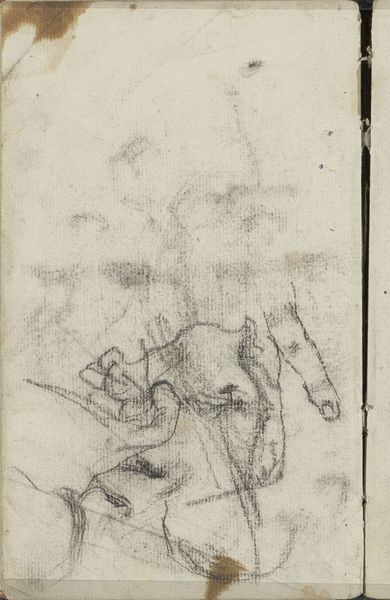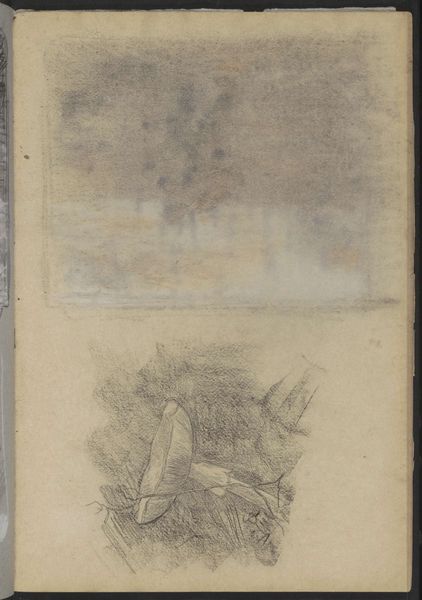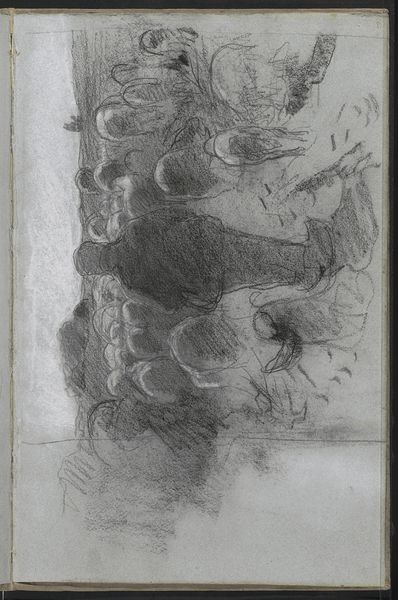
drawing, paper, pencil, charcoal
#
drawing
#
baroque
#
pencil sketch
#
landscape
#
charcoal drawing
#
figuration
#
paper
#
pencil
#
line
#
charcoal
#
history-painting
Copyright: Rijks Museum: Open Domain
Curator: Hendrick van Beaumont’s “Roof van Europa,” created around 1696, employs a combination of pencil and charcoal on paper. What strikes you first about this work? Editor: It's the dynamism. Despite being a sketch, the lines create such a powerful sense of movement, spiraling upwards almost violently. There's a real tension in the composition. Curator: That’s astute. Considering it’s a study of the abduction of Europa, the sense of violent movement aligns well. Looking at the paper itself and the artist's process is key here. The drawing isn't just a preliminary design; it represents labor, material exploration. You can almost feel van Beaumont working and reworking the scene. Editor: Yes, but within that process, consider the artistic decisions themselves. See how the light catches Europa’s form, emphasizing her vulnerability against the rough handling of the bull. The lines here are not merely functional, they communicate meaning. The structural contrast highlights her forced journey. Curator: Precisely. However, let’s consider what 'forced journey' meant in the context of 17th century European politics and trade. The exploitation suggested isn't just physical; it hints at a larger narrative of cultural dominance, a material conquest reflected in the artwork. The pigment itself was a commodity! Editor: Fair point. Still, irrespective of the external factors involved in production, it is difficult not to address the inherent structure: look at how Van Beaumont framed her. How her form creates that sort of spiral in concert with the bull--they have different weights and create counterforces for the eye to travel on. Curator: And traveling onward, think about who purchased Beaumont's artworks, what political narratives those purchases supported. His work exists in the context of specific economies. Understanding those is key. Editor: I concede the social context adds depth. But without understanding how line, form, and composition interact, all these social factors are rather mute. In this rendering, you're almost more able to recognize what story or commentary van Beaumont is trying to engage through formal choices. Curator: Perhaps the best way to engage is to appreciate the layers – artistic decision, material reality, socio-political undercurrent – to get closer to understanding “Roof van Europa." Editor: Indeed. Perhaps both roads lead up the same artistic mountain.
Comments
No comments
Be the first to comment and join the conversation on the ultimate creative platform.
